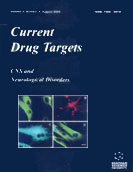Abstract
The simplest explanation for the selective loss of substantia nigra (SN) dopamine (DA) neurons in Parkinsons disease (PD) is that DA or a metabolite is neurotoxic. Recently, a series of investigations implicate the MAO metabolite of DA, 3,4-dihydroxyphenylacetaldehyde (DOPAL), as the critical endogenous toxin which triggers DA neuron loss in PD: 1. Hereditary PD contains mutations in the gene for α-synuclein (α-syn). Investigations implicate a DA metabolite as mediator of α-syn neurotoxicity, and DOPAL is 1000-fold more toxic than DA in vivo. 2. A deficit in mitochondrial complex I is found in PD SN. Inhibition of complex I causes increases in DOPAL levels and death of DA neurons in vitro and in vivo. 3. L-DOPA, the precursor of DA, which is used to treat PD, is toxic and contributes to the progression of PD. L-DOPA-treated rats have an 18-fold increase in striatal DOPAL. 4. Free hydroxyl radicals (.OH) trigger aggregation of α-syn to its toxic form. DOPAL with H2O2 generates .OH radicals. These investigations provide several therapeutic strategies to limit DOPAL toxicity and progression of PD: 1. Delaying the start of L-DOPA therapy by early use of DA receptor agonists, which may also be free radical scavengers, limits the amount of DOPAL formed from L-DOPA. 2. Nonspecific MAO inhibitors may more effectively decrease production of DOPAL from DA than MAO-B inhibitors. 3. Newer more potent and targeted free radical scavengers could block DOPAL toxicity. 4. Coenzyme Q10 increases complex I activity and nicotine adenine dinucleotide (NAD) synthesis, and thereby could enhance DOPAL catabolism by aldehyde dehydrogenase, which uses NAD as a cofactor. 5. DA uptake blockers could be used to limit intraneuronal DOPAL production. 6. Tauroursodeoxycholic acid, an inhibitor of apoptosis shown to be effective in models of Huntingtons disease, may also prove effective in blocking DOPAL toxicity in PD. 7. Agents which block aggregation of α-syn should limit DOPAL toxicity.
Keywords: therapeutic targets in parkinsons disease, dihydroxyphenylacetaldehyde, dopamine neurotoxin
 4
4

















